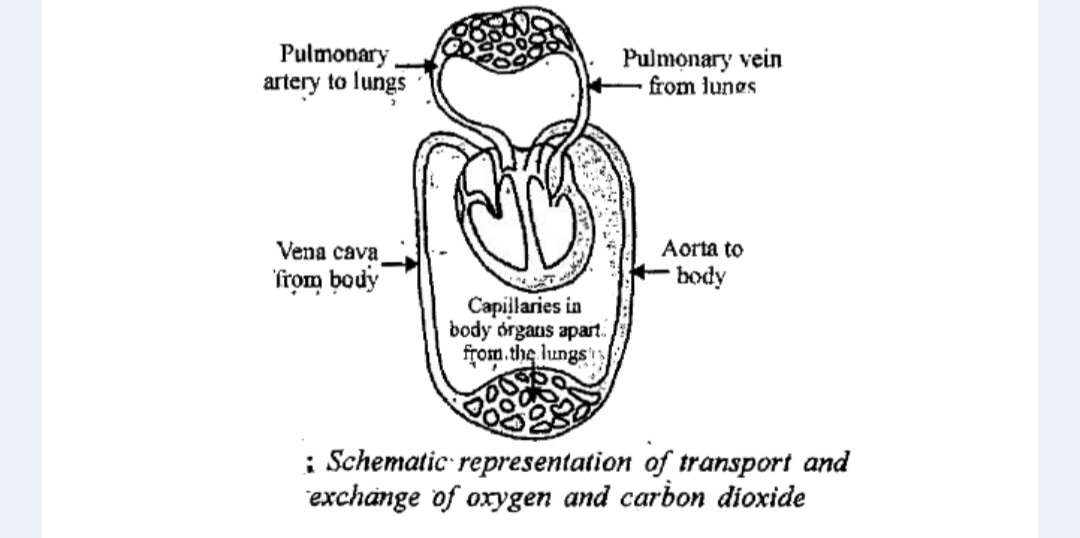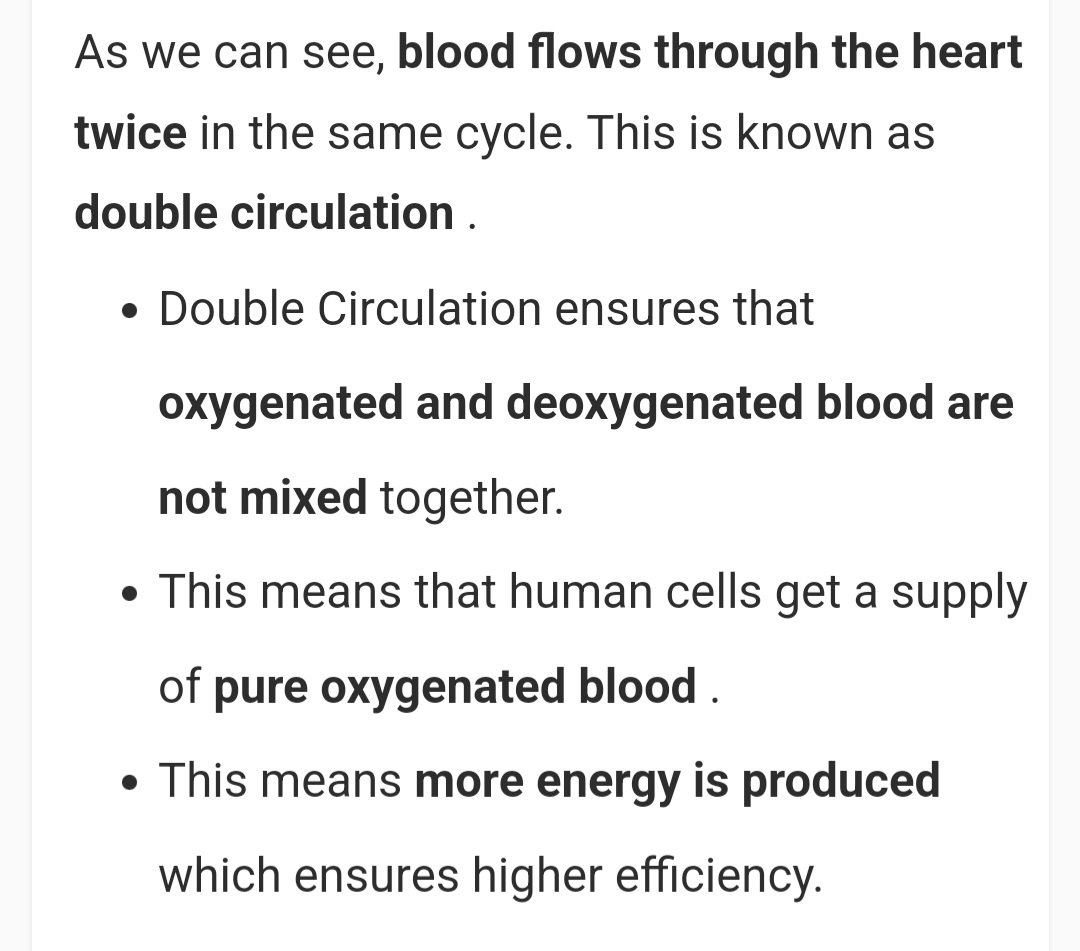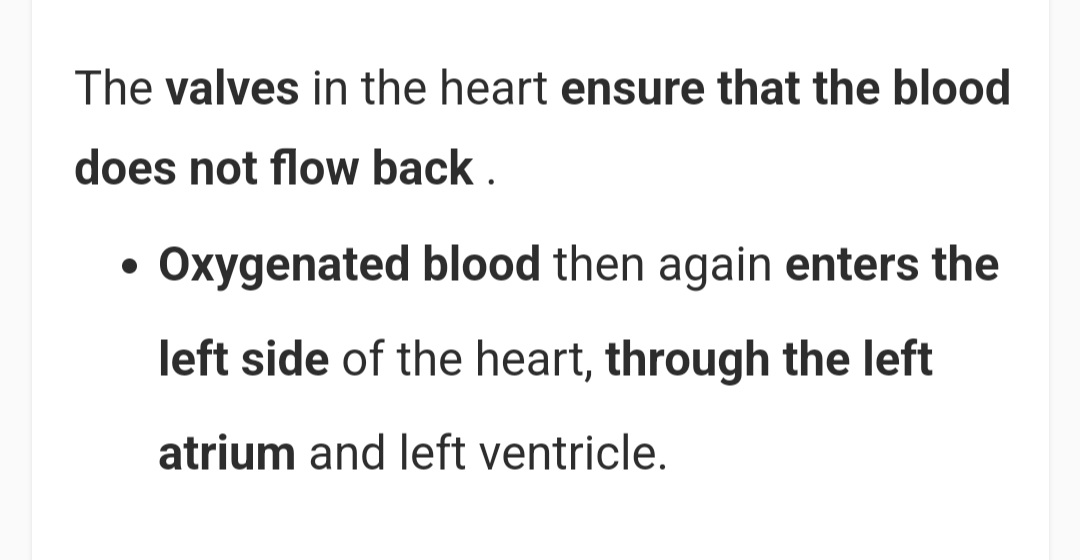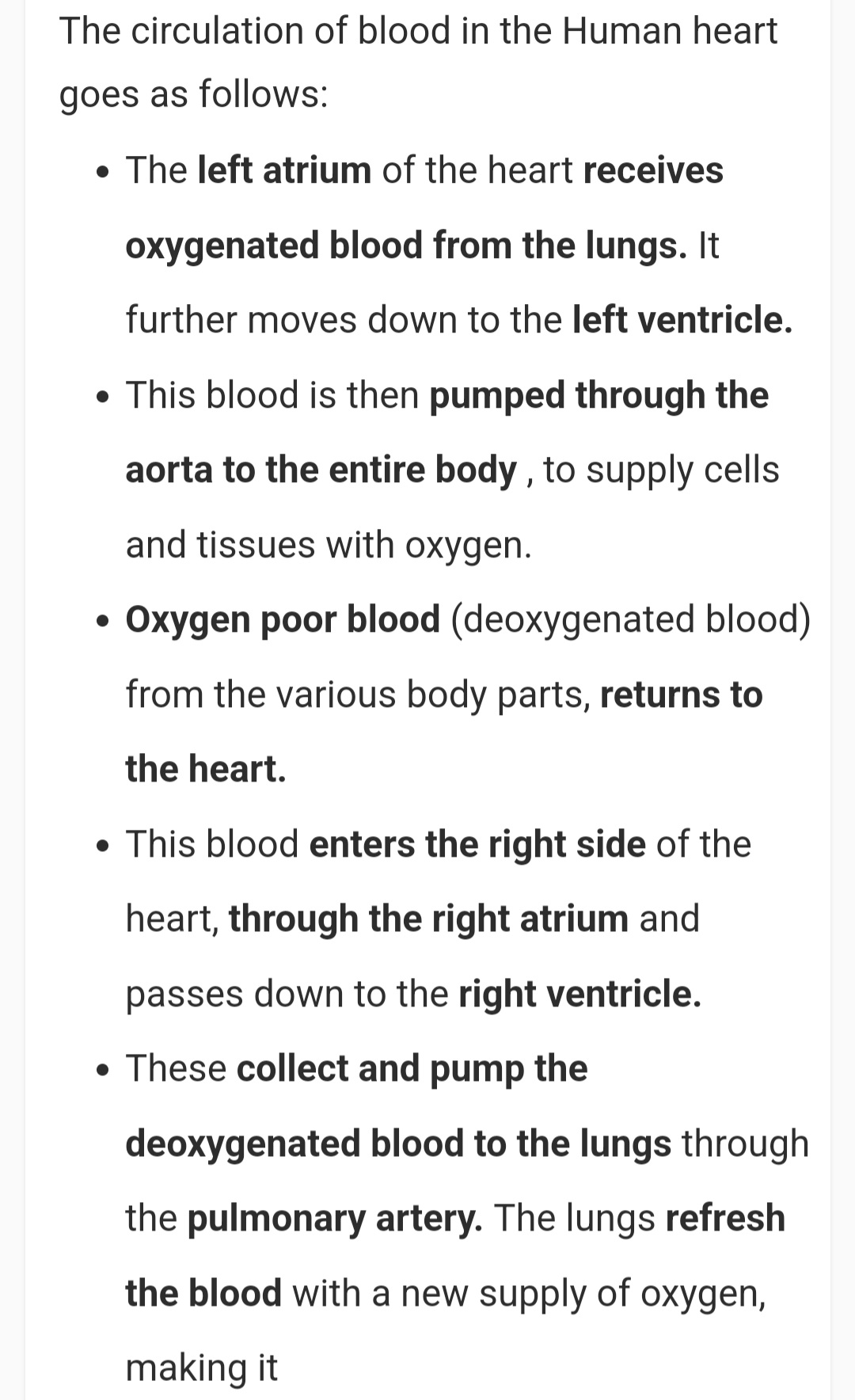Describe double circulation of blood in human beings. Why is it necessary?




Double circulation in human beings : Deoxygenated blood from body is féd to right atrium and then to right ventricle and fed to lungs and from lungs oxygenated blood is brought back to different parts of body. Thus during each circulation cycle in humans, blood goes through heart twice. This is known as double circulation.
It is necessary to prevent the mixing of oxygenated and deoxygenated blood. It also allows a highly efficient supply of oxygen to the body.
In another way
Double circulation in humans refers to the circulatory process where blood passes through the heart twice during each complete cycle. It’s essential for efficient oxygen delivery to the body and removal of carbon dioxide. This is achieved through two separate circuits: pulmonary and systemic circulation.
Pulmonary Circulation: This circuit involves the heart and lungs, where deoxygenated blood from the heart is pumped to the lungs for oxygenation, and then oxygenated blood is returned to the heart.
Systemic Circulation: This circuit involves the heart and the rest of the body, where oxygenated blood is pumped from the heart to the tissues and organs, delivering oxygen and nutrients, and deoxygenated blood is returned to the heart.
Double circulation is necessary because it ensures that:
Oxygenated blood is separated from deoxygenated blood:
This prevents the mixing of blood with different oxygen levels, which would reduce the efficiency of oxygen delivery to the body.
Efficient oxygen supply:
By separating oxygenated and deoxygenated blood, double circulation ensures that the body’s tissues receive a constant supply of oxygen for energy production
Double circulation, in a general sense, doubles the roadway on which the blood can occupy inside the human circulatory system: the pulmonary circuit and the systemic circuit. These two highways make sure the blood is properly pumped to the lungs and gets fully oxygenated and then to the other half of the body for oxygenation including supplying nutrients to the tissues and deposing waste products.
The two circuits:
1. Pulmonary Circulation:
– This specific circuit handles deoxygenated blood from the heart to the lungs and passes it back again to the opposite side.
– Once the deoxygenated blood arrives from the body to return to the right atrium, it travels through the right ventricle to the lungs through the pulmonary artery.
– In the lungs, oxygen is absorbed from the air, and carbon dioxide is given up. The now-newly oxygen-saturated blood comes back via the pulmonary veins to the left atrium of the heart.
2. Systemic Circulation:
– This circuit transports fresh blood from the heart to the body for oxygenation and returns waste material in the form of old blood back to the heart.
– Freshly oxygenated blood in the left atrium will pass into the left ventricle, which in turn shoots it out of the heart through the aorta to the rest of the body.
– While blood oozes to the tissues, oxygen delivers oxygen to the tissues through the exhaustion of carbon dioxide by-products. The depleted blood is carried back to the heart through the superior and inferior vena cava and falls into the right atrium in eagerness to start its journey again.
Need for Double Circulation:
1. Efficient Oxygenation: Double circulation allows the blood to be pumped through the lungs and oxygenated before being provided to the body. In this way, the blood deluged with oxygen runs efficiently to tissues, providing trusteeship towards the provision of an ideal oxygen level to initiate energy through processes such as cell respiration.
2. Separation of Oxygenated and Deoxygenated Blood: The two circuits prevent the mixing of oxygen-rich and oxygen-poor blood, which ensures that tissues receive blood with a high concentration of oxygen and that the blood returning to the heart is low in oxygen and high in carbon dioxide. This separation is crucial for maintaining the efficiency of both oxygen uptake in the lungs and oxygen delivery to tissues.
3. Higher Blood Pressure Binding to Systemic Circulation: The need for systemic circulation is important for the heart to have high enough pressure to pump blood out into the whole body, including the extremities. With a second system in place, such high pressure can be maintained in the systemic circulation without creating direct damage to the delicate lung tissues by using lower pressure in the pulmonary circuit.
4. For Larger Organisms to Survive: Double circulation is a critical operation in larger or more complex creatures such as human beings: the tissues in these cases are far from the heart, to be instantly met with a more intense circulatory system. Upon the oxygen demand, this large-sized animal organism hence uses double circulation.
In general, double circulation plays its role in efficient gas exchange, identifying issues of maintaining pressure differentials and supporting the body’s metabolic wellness. Also, it provides that oxygen is transferred well to tissues and that waste products are bared expelled.